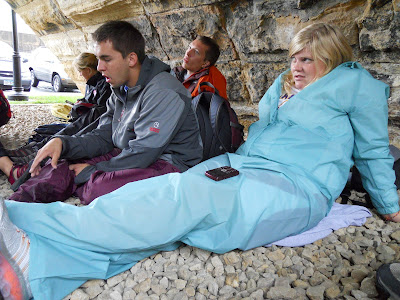 |
| Lower Falls |
Today we got our 7:00am wake up call. A quick bite to eat and we loaded the vans around 8:00am. We headed into West Yellowstone on our way to the Lower Falls. Today, Kaspar and I were assigned to begin our Place Project, part of which includes a photo collage that shows the experience we had in the space, so we had to take a lot of photos. When we first arrived, the overall beauty of the place took us back. A mist came up like a cloud from the bottom of the canyon and the sun was casting shadows on the canyon walls. Gary had us do some two minutes sketches of details from the canyon walls and water at Artist Point. When we finished our detail sketches we were given ten minutes to do a sketch of the entire Lower Falls and lower stream. It was so relaxing sketching and the weather could not have been more perfect.
 |
| Lower Canyon |
After sketching, we left on our six-mile hike on a loop near Lower Falls. Our first stop was Ribbon Lake where we wrote haikus about the area. It was remote and absolutely breathtaking. You could see the sky and trees reflecting in the water. After a much-needed lunch and a back woods potty break, we continued on our journey through more remote landscape.
 |
| Ribbon Lake |
We reached the thermal pools, which put off a strong smell of sulfur. They were a very vibrant aqua color. We spotted our first bear track, which was very exciting for all. Everyone was running low on water and the hike was getting long and tiring. We stopped by Clear Lake and we put our sore feet in the cool blue water. It felt so good after being on our feet for such a long time. When we left the pool we walked through a wasteland that was white and smoky. We continued up the path towards the Lower Falls and Artist Point where our journey had begun. After a few more photos we headed back to the vans.
 |
| Clear Lake |
Our day ended back at our West Yellowstone hotel. We all packed our stuff to get ready to head to the Tetons and another campground.
Brittany Morrison and Kaspar Musteikis














































